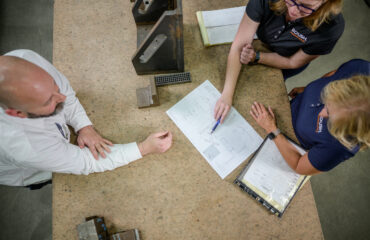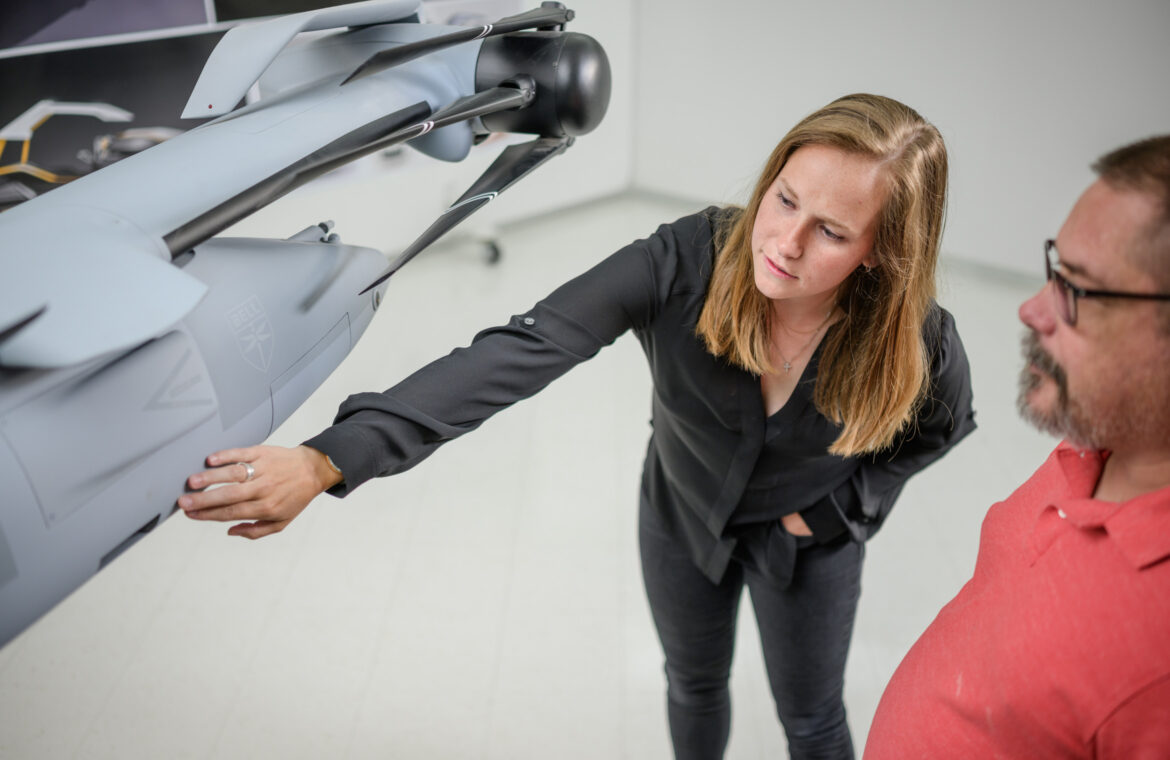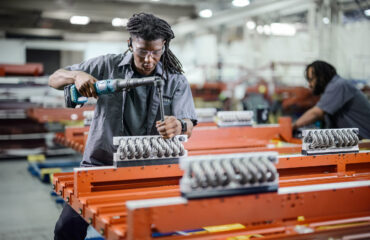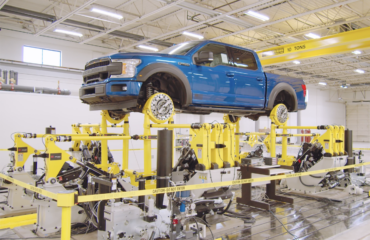 And Roush Made it Happen
And Roush Made it Happen
Flying High in Air Mobility
Topics:

Our 45-plus years of automotive industry design, engineering, prototyping, testing and manufacturing experience is directly transferable to every other market in which we participate. That includes advanced aerospace, where Roush has been heavily involved in projects both terrestrial and cosmic, from drones to spacecraft. In all cases, Roush makes cutting-edge air mobility happen.
Case in point: Fifteen years ago, Bell Textron Inc. went to Ford for assistance with a helicopter application; Ford directed them to Roush. Our first project was to create mock-ups of variants of the Bell SXM helicopter that were two years away from flying. The idea was to show the mock-ups off at a trade event to garner customer feedback and secure pre-orders.
The result? Over 100 customer orders for the Bell SXM. Roush’s mock-up of the Bell 429 was non-functional, meaning it did not have an actual engine but gave the illusion that it could fly. In fact, it was so realistic that helicopter pilots attending the show asked who was lucky enough to fly that bird to the show. The mock-up had real components, like wiring and engine fuel tank, to showcase how easy servicing would be.
But mock-ups are just one facet of the Roush aerospace story. Our simulators, which duplicate the cockpit area of a real aircraft like helicopters and fixed-wing models, allow pilots to receive training with the locations and actions required to operate the real thing. Roush’s intense attention to detail here is mission critical, because when a trainee pilot transitions to the real aircraft, there is no difference between the two. Whether developing helicopter flight training simulation devices, fixed wing aircraft flight training simulators or in-flight refueling simulation devices, we do what it takes to make it work, creating the hardware to house our customer’s technology.
We recently developed an air taxi passenger pod for a major aerospace manufacturer. That project was accomplished through our in-house creative services, where we use sophisticated CAD tools to create digital drawings and renderings of ideas that can be slightly adjusted or completely changed, based on customer needs.
A program Roush executed for a large aerospace manufacturer is an example of applying advanced engineering capabilities to space exploration, taking an experimental engine design from concept through design to physical hardware. The technology developed by Roush enables longer mission durations and increased payload capacity. We continue to support exciting development in the space exploration segment of aerospace.
One of the biggest challenges of working with the aerospace industry is the balance between concept and reality. Many startups have great ideas but getting them built and certified with the Federal Aviation Administration isn’t easy. Roush adds value to these new companies by bringing the concept to life so they can present their ideas to investors and other federal authorities before turning their concepts into an actual product.
That’s why Roush’s future in the aerospace market is so bright. Our technical expertise and breadth of services transcends industries. Right now, there are many entrepreneurs and startups chasing ideas and concepts to take a commanding lead in the market, especially with the possibility of recreational space travel on the horizon. The next decade will provide some amazing challenges and opportunities for Roush.
And after all, our roots in aerospace run deep. Our founder Jack Roush is well-known for his love of flying. We can’t wait to help make the seemingly impossible possible.
Related Blog Posts
 And Roush Made it Happen
And Roush Made it Happen
 Contract Manufacturing Brings the Remarkable to Life
Contract Manufacturing Brings the Remarkable to Life
 Increasing Quality by Reducing NVH
Increasing Quality by Reducing NVH